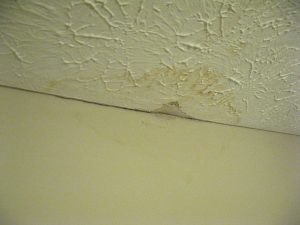Water in your house – whether it’s from a flood, a leakage, burst pipelines, or another source – can lead to substantial damage and expensive repair work if it’s not handled without delay. If you have water damage in your home, you’ll want to act quickly to fix the problem. The following water damage repair work pointers will assist you to get the scenario under control and avoid more complicated problems in the future.
1. You require to act quickly. If you have water damage in your home, you need to act rapidly to fix the problem. Some cleaning services offer 24-hour emergency services to help you cope with water damage. Calling these experts as soon as you discover a problem will make it easier to reduce any water damage. To prevent mold development, the U.S. Environmental Protection Agency (EPA) suggests drying out damp or damp areas within 24 to 48 hours. Depending on the cause of the damage, you may also wish to call your homeowner’s insurance company to see about getting the claim procedure started.
2. Be cautious. If you’ve just become aware of a problem with water in your house, there are a few actions you ought to take. First, if there’s a lot of water (such as from flooding), you need to turn off your electrical power to prevent electrocution. Also, do not use your routine family appliances (such as a vacuum cleaner) to remove water. If the water is contaminated (such as from a sewage line), you and your family should leave the house so that you don’t get sick. Lastly, if the water is from a leak, try to locate the leakage’s source and turn off the water to prevent further damage.
3. Know the subtler signs of water damage. If you’re handling a flood or a burst pipe, it’s difficult to disregard. However, in some cases, the indications of water damage can be subtle and easy to miss. To prevent hidden water damage, regularly inspect your house for leaks in the restroom and kitchen area. Look for wet or moldy spots in these and other areas, such as around the cleaning maker or in window frames. Also be on the lookout for soft spots in your walls, which could be an indication of covert damage.
4. Begin eliminating the water. Depending on the degree of the water issue, you have some choices for removal. For relatively small scenarios, letting a damp space air dry might be a great, though slow, method to water damage repair work. To air dry a damp space, open all doors and windows; think about utilizing fans to circulate air, which will accelerate drying time. Dehumidifiers may likewise be valuable. If you have a lot of water, however, you might need to employ an expert to very first extract the water from your house.
5. Dry out any prized possessions. If water has harmed books, images or other valuables, you’ll wish to dry those out as soon as possible. In cases of substantial damage, you may require to focus on which items to look after first, since you’ll improve outcomes if you take action within 24 hours.

Water damage describes various possible losses caused by water intruding where it will enable attack of a material or system by destructive processes such as rotting of wood, mold growth, bacteria growth, rusting of steel, swelling of composite woods, de-laminating of materials such as plywood, and many others.
The damage may be imperceptibly slow and minor such as water spots that could eventually mar a surface, or it may be instantaneous and catastrophic such as burst pipes and flooding. However fast it occurs, water damage is a major contributor to loss of property.
An insurance policy may or may not cover the costs associated with water damage and the process of water damage restoration. While a common cause of residential water damage is often the failure of a sump pump, many homeowner’s insurance policies do not cover the associated costs without an addendum which adds to the monthly premium of the policy. Often the verbiage of this addendum is similar to “Sewer and Drain Coverage”.
In the United States, those individuals who are affected by wide-scale flooding may have the ability to apply for government and FEMA grants through the Individual Assistance program.[1] On a larger level, businesses, cities, and communities can apply to the FEMA Public Assistance program for funds to assist after a large flood. For example, the city of Fond du Lac Wisconsin received $1.2 million FEMA grant after flooding in June 2008. The program allows the city to purchase the water damaged properties, demolish the structures, and turn the former land into public green space.

